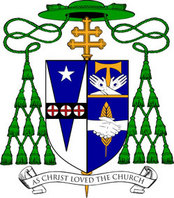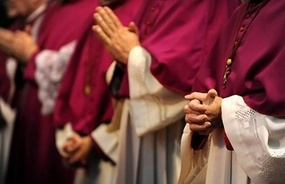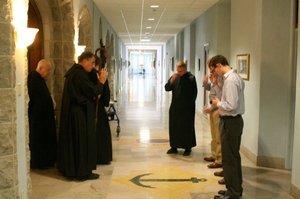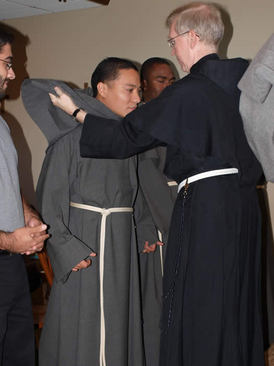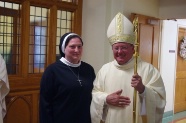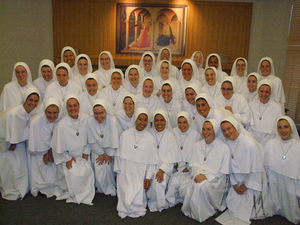The monastic life is capable to breathe new life into lungs of an ailing body, the Church. A recent interview with the Prefect of the Congregation for the Evangelization of Peoples, Archbishop Fernando Filoni, gives his observations and direction. While he speaks of The Order of Saint Bridget that was refounded by Blessed Mother Maria Hesslblad, his comments are worth paying attention to and applied to all orders. These nuns, by the way, have one US house in Darien, Connecticut. The interview is here.
Category: Vocations
Male religious life revives
A recent article in the National Catholic Register by Trent Beattie, “Surprising Revival for Men in Religious Life” notes that tide may be turning for some religious orders of men, especially those who remain faithful to prayer, orthodox theological reflection as proposed by the Church, a common life and work and the wearing of a religious habit. Beattie highlights the Texas Carmelites, Connecticut’s Franciscan Brothers of the Eucharist and the Oklahoma Benedictines of the Creak Creek abbey. All of the groups are beautiful expressions of the work of the Holy Spirit today.
Nuns on parade in the Hung Hoa Diocese
Priesthood Sunday 2011
Fr Bob Bedard RIP
Chaput gives witness to the vocation of bishop
Yesterday’s installation of Archbishop Charles J. Chaput as the new Archbishop of Philadelphia was beautiful on all avenues: music, word, gersture. One of many beautiful parts of his homily was on the ministry (vocation) of the bishop. For that part he quoted the great bishop and Doctor of the Church, Saint Augustine of Hippo. You may think I am cynical by saying this, but I wonder sometimes how often our bishops live up to their vocation as the Church has expected and how often they reflect on the words of a brother such as the eminent Augustine. Perhaps not often enough. AND that is likely the reason Archbishop Charles mention the vocation his homily.
What follows is a terrfic teaching on this vitally vigorous vocation of the Church.
Thanks be to God for the Archbishop!
St. Augustine of Hippo, speaking in the 4th century captured the role of the bishop in these words:
“Jerusalem had watchmen who stood guard . . . And this is what bishops do. Now, bishops are assigned this higher place” — the bishop’s chair in the basilica -“so that they themselves may oversee and, as it were, keep watch over the people. For they are called episkopos in Greek, which means ‘overseer,’ because the bishop oversees; because he looks down from [his chair] . . . And on account of this high place, a perilous accounting will have to be rendered [by the bishop] – unless we stand here with a heart such that we place ourselves beneath your feet in humility.”
Another time, on the anniversary of his episcopal ordination, Augustine described the bishop’s duties in the following way:
“To rebuke those who stir up strife, to comfort those of little courage, to take the part of the weak, to refute opponents, to be on guard against traps, to teach the ignorant, to shake the indolent awake, to discourage those who want to buy and sell, to put the presumptuous in their place, to modify the quarrelsome, to help the poor, to liberate the oppressed, to encourage the good, to suffer the evil and to love all men.”
It’s crucial for those of us who are bishops not simply to look like bishops but to truly be bishops. Otherwise, we’re just empty husks — the kind of men Augustine meant when he said,
“You say, ‘He must be a bishop for he sits upon the cathedra.’ True – and a scarecrow might also be called a watchman in the vineyard.”
Religious life 2011: Profession of vows, entrances and ordinations
 About this time of each year I look at the numbers of who professed vows, entered religious life and/or ordained of a select group of religious orders of the mixed, apostolic life and monasteries since Autumn 2010.
About this time of each year I look at the numbers of who professed vows, entered religious life and/or ordained of a select group of religious orders of the mixed, apostolic life and monasteries since Autumn 2010.
Priest and seminarian killed in Tulsa Diocese
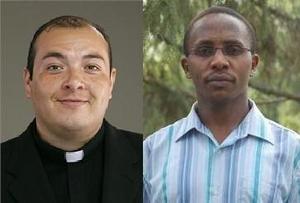 From my friend, Father Frowin, I learned of this tragic news:
From my friend, Father Frowin, I learned of this tragic news:
Last night a driver traveling an estimated 85 mph and failing to stop at a red
light broadsided and killed Father Jorge Gomez (ordained a priest just last month)
and seminarian Stanley Karioke.”
faithful departed, rest in peace. Amen.
Benedict to women religious: testify to your personal encounter with Christ
Here are the central paragraphs the Pope addressed to women religious at the Escorial earlier today.
Dear Sisters, every charism is an evangelical word which the Holy Spirit recalls to the Church’s memory (cf. Jn 14:26). It is not by accident that consecrated life “is born from hearing the word of God and embracing the Gospel as its rule of life. A life devoted to following Christ in his chastity, poverty and obedience becomes a living ‘exegesis’ of God’s word… Every charism and every rule springs from it and seeks to be an expression of it, thus opening up new pathways of Christian living marked by the radicalism of the Gospel” (Verbum Domini, 83).
Continue reading Benedict to women religious: testify to your personal encounter with Christ
Monasteries are true and proper oases for humanity, Benedict XVI reminds us
In Wednesday’s edition of L’Osservatore Romano, Pope Benedict told the listeners of the Wednesday General Audience that the monastic life is an essential value for humanity and for the Church, today. The Pope’s emphasis on beauty and silence helps us to appreciate and to listen God’s promptings of the desires of the heart is important. Let’s pay attention to what the Pope has to say. You may also want to watch the Rome Reports news video.
The editor writes, “Monasteries are true and proper oases of the spirit in which God speaks to humanity. The Pope said this to faithful at the General Audience of Wednesday, 10 August, that was held in the courtyard of the Papal Residence at Castel Gandolfo.”
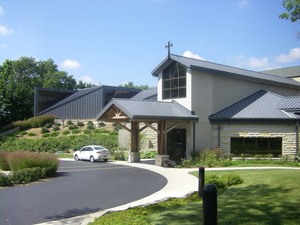 Dear Brothers and Sisters! In every age, men and women who have consecrated their lives to God in prayer – like monks and nuns – have established their communities in particularly beautiful places: in the countryside, on hilltops, in valleys, on the shores of lakes or the sea, or even on little islands. These places unite two elements which are very important for contemplative life: the beauty of creation, which recalls that of the Creator, and silence, which is guaranteed by living far from cities and the great means of communication. Silence is the environmental condition that most favors contemplation, listening to God and meditation. The very fact of experiencing silence and allowing ourselves to be “filled,” so to speak, with silence, disposes us to prayer. The great prophet, Elijah, on Mount Horeb – that is, Sinai – experienced strong winds, then an earthquake, and finally flashes of fire, but he did not recognize the voice of God in them; instead, he recognized it in a light breeze (cfr. 1 Rev 19:11-13). God speaks in silence, but we need to know how to listen. This is why monasteries are oases in which God speaks to humanity; and there we find the courtyard, a symbolic place because it is a closed space, but open toward the sky.
Dear Brothers and Sisters! In every age, men and women who have consecrated their lives to God in prayer – like monks and nuns – have established their communities in particularly beautiful places: in the countryside, on hilltops, in valleys, on the shores of lakes or the sea, or even on little islands. These places unite two elements which are very important for contemplative life: the beauty of creation, which recalls that of the Creator, and silence, which is guaranteed by living far from cities and the great means of communication. Silence is the environmental condition that most favors contemplation, listening to God and meditation. The very fact of experiencing silence and allowing ourselves to be “filled,” so to speak, with silence, disposes us to prayer. The great prophet, Elijah, on Mount Horeb – that is, Sinai – experienced strong winds, then an earthquake, and finally flashes of fire, but he did not recognize the voice of God in them; instead, he recognized it in a light breeze (cfr. 1 Rev 19:11-13). God speaks in silence, but we need to know how to listen. This is why monasteries are oases in which God speaks to humanity; and there we find the courtyard, a symbolic place because it is a closed space, but open toward the sky.
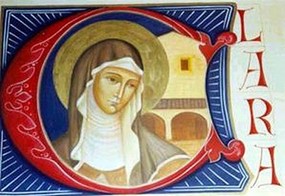 Tomorrow, dear friends, we will celebrate the memory of St. Clare of Assisi. So I would like to recall one of these “oases” of the spirit which is particularly dear to the Franciscan family and to all Christians: the little convent of San Damiano, situated just beneath the city of Assisi, among the olive groves that slope towards Santa Maria degli Angeli. In that little church, which Francis restored after his conversion, Chiara and her first companions established their community, living off prayer and little works. They were called the “Poor Sisters,” and their “form of life” was the same as the Frati Minori: “To observe the Holy Gospel of our Lord Jesus Christ” (Rule of St. Clare, I, 2), conserving the union of reciprocal charity (cfr ivi, X, 7) and observing in particular the poverty and humility of Jesus and his Most Holy Mother (cfr, ivi, XII, 13).
Tomorrow, dear friends, we will celebrate the memory of St. Clare of Assisi. So I would like to recall one of these “oases” of the spirit which is particularly dear to the Franciscan family and to all Christians: the little convent of San Damiano, situated just beneath the city of Assisi, among the olive groves that slope towards Santa Maria degli Angeli. In that little church, which Francis restored after his conversion, Chiara and her first companions established their community, living off prayer and little works. They were called the “Poor Sisters,” and their “form of life” was the same as the Frati Minori: “To observe the Holy Gospel of our Lord Jesus Christ” (Rule of St. Clare, I, 2), conserving the union of reciprocal charity (cfr ivi, X, 7) and observing in particular the poverty and humility of Jesus and his Most Holy Mother (cfr, ivi, XII, 13).
Benedict XVI at the General Audience stresses the value of monastic spirituality God speaks in silence Benedict XVI at the General Audience stresses the value of monastic spirituality God speaks in silence and beauty of the place in which the monastic community lives – simple and austere beauty – are like a reflection of the spiritual harmony which the community itself attempts to create. The world is filled with these oases of the spirit, some very ancient, particularly in Europe; others are more recent, while still others have been restored by new communities. Looking at things from a spiritual perspective, these places of the spirit are a load-bearing structure of the world! It is no accident that many people, especially in times of rest, visit these places and stop there for some days: even the soul, thanks be to God, has its needs! The Pope continues:
Let us remember, therefore, St. Clare. But let you also remember other Saints who remind us of the importance of turning our gaze to the “things of heaven,” like St. Edith Stein, Teresa Benedicta of the Cross, Carmelite, co-patron of Europe, whom we celebrated yesterday. And today, August 10, we cannot forget St. Lawrence, deacon and martyr, with a special wish for Romans who have always venerated him as one of their patrons. Finally, let us turn our gaze to the Virgin Mary, that she may teach us to love silence and prayer.



